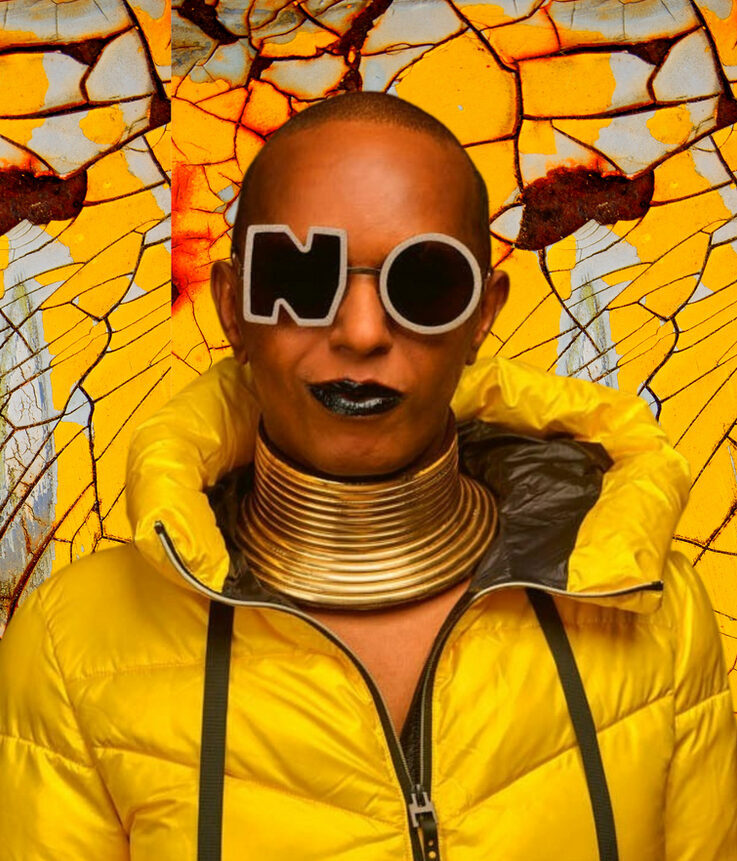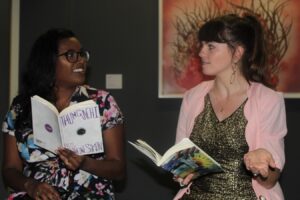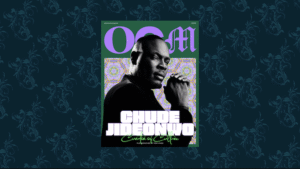After years of maintaining a pristinely positive social media presence, Sofia Samatar, the American-Somali novelist, poet, and academic, pulled the plug.
“I had my reasons,” she told me via email, “including the corrosive effects of self-branding, the reduction of dialogue to ‘likes,’ the dystopian hypocrisy of private companies masquerading as public space, and the basic ridiculousness of me spending hours of my time crafting a Twitter feed, working for free as a curator of information for a company in which I did not even own stock. I mean. That is bananas!”
One irony of the power of modern tech companies, and of their insidious mission creep, is that we have come to view privacy as the ultimate status symbol, because the logistical nightmare of going off grid, of evading the surveillance state, is so stressful that, sooner or later, the slot machine seduction of social media finds its way back into our orbits. Not so for Samatar.
Samatar has books to write: a catalogue that includes the Olondria duology, A Stranger in Olondria and The Winged Histories, an epic historical fantasy series steeped in mystical splendour and poeticism; the short story collection Tender; and the genre-bending mix of text and images Monster Portraits, a collaboration with her brother Del Samatar. She has even more books to read; a young family that demands her attention; academic duties; and a readership that has increased exponentially with each book, and that includes fellow acclaimed authors Daniel José Older, Nnedi Okorafor, Carmen Maria Machado, Maaza Mengiste, and Kelly Link, her previous publisher at Small Beer Press.
Besides, she said, “The weather is so good out here. I have so much more time. I read two hundred books a year. My food is my food, not a photo op. I think my thoughts, I don’t craft them. I don’t shape them for consumption. I know what I think.”
Still, Samatar sees the value of tools like Twitter, and remains open to returning to the platform in the future. But for now, by unlocking herself from the digital attention economy, she has found peace.




Everyone has a context for who they are and how they move in the world. For Samatar, daughter of a Somali father and an American Mennonite mother, her intersectional identity formed her rich creative life. She understands that the periphery is its own power, that standing at the doorway of two contradistinctive cultures affords one the ability to see both in CinemaScopic detail and, per Nora Ephron, take notes.
Her debut novel, A Stranger in Olondria, took more than a decade to write. Published by a hip indie press, Small Beer, it became a critical smash, winning the British Fantasy Award, the John W. Campbell Award, the Crawford Award, and the World Fantasy Award.
The irony of her World Fantasy Award triumph was that the statuette was a small bust of H.P. Lovecraft, the massively influential but undeniably racist cult writer, which made Samatar uneasy. This was supposed to be a celebration, not a frustration. So she spoke truth to power at the podium.
“My memory of that night is that it was extremely stressful,” she said, “which was the reason I publicly thanked the World Fantasy Convention for considering changing the award statuette. Because when you’re a finalist for an award, you should be thrilled, not stressed! And as long as the award was represented by Lovecraft, the whole process was going to be mired in ill feelings and discontent.”
She is not against reading H.P. Lovecraft, though. “I teach his fiction. But the place to discuss Lovecraft is a speculative fiction classroom, or a Lovecraft conference, or a pub with your friends. It’s not the banquet hall in a hotel where the World Fantasy Award is being presented to living writers. We should be discussing and celebrating those writers. So I’m happy the award statuette has been changed to an elegant, ghostly, neutral tree.”
Not long after her decision, think pieces—like “The Meme-ification of Sofia Samatar”—popped up all over the Internet, becoming part of a larger conversation about the reactionary elements within fantasy and science fiction writing and its fanbase.

Samatar’s new literary project, The White Mosque, is billed as a memoir, but this is too easy a categorisation. Part Pilgrim’s Progress, part collage, pure poetry, the text traces her Mennonite roots all to the way to Eurasia, and in the process uncovers the history of a misrepresented community and its descendants in Uzbekistan. The book is lovingly written, without a sentence out of sync, so I ask Samatar whether she considers the book, and her entire oeuvre, a lesson in literary hybridity: fusions that feel like mosaics, but with something more alchemic, unknowable, at their heart.
“It’s certainly mixed,” she said. “It’s true that all my work is like this. In The White Mosque, the blend of genres is obvious, inescapable, because you’re reading a memoir, and all of a sudden, the narrative veers into history. Monster Portraits, the book I did with my brother, is also very clearly a brew of art and text, fiction and nonfiction, poetry and prose. But even my earlier books of fiction have a hybrid quality. In fact, that’s exactly what made A Stranger in Olondria so hard to sell. It mingles the tropes of epic fantasy with language that’s unusual for the genre today, creating a mixed storytelling style, a fusion.”
Her prose has the kind of rhythmic rightness that Toni Morrison or Octavia Butler might have admired. I am always curious about what I call “the flawless effect”: prose so polished, you don’t see the sweat that went into perfecting them. Joan Didion and Janet Malcolm, for example, sculpted their non-fiction so intensely until there were no traces of fingerprints on them. Samatar gently dismisses the notion that this might be how she works.
“I love prose that’s written by poets—Michael Ondaatje, Fred Moten, Bhanu Kapil,” she told me. “As for how long it takes me to make a sentence, that varies widely. In general, the longer it takes, the worse the sentence will be. It’ll say something—often something crucial, which is why I work so hard on it—but it won’t sing. The loveliest sentences are intuitive, magic.”
In The White Mosque, Samatar writes evocatively about race, particularly what it means to be mixed-race, and the macro- and microagressions of her daily encounters in almost every sphere. I ask her whether it’s easier for younger generations to navigate this sense of difference. How much of this lack of understanding and basic human decency is a symptom of American racism? Or did she encounter the same problems when she was a teacher in South Sudan?
“One would think it would be easier to be a mixed-race person today, just because there are more of us,” she replied. “But from what I’ve heard from young people, that’s not the case. A young, Black, mixed-race writer told me recently that she’d read that mixed people are ‘cognitively challenging’ to people who identify with just one race. We laughed about it—laughter is important!—but it was clear that this comment had struck her, that it chimed with her experience, and that she was still processing its implications. In other words, it’s still work.”
Her experience in South Sudan was different. “In Yambio, where I taught, I wasn’t a cognitive challenge. I was simply American, a foreigner, white! People who got to know me better and learned that my dad was Somali saw me as Somali and American. That was simple, too, because one was a tribe and the other a nationality. Everybody had both of those things. It was no big deal.”
Coming up on Samatar’s ledger is The Practice, the Horizon, and the Chain, a novella forthcoming from Tor in 2024. “It’s about revolutionary students and teachers in a university connected to a prison—in outer space! It’s a space romp for tired college lecturers and worn-out grad students and professors who sit for hours on diversity committees without getting any results. It’s, like, if a bad committee meeting turned into Star Wars.”
There was a magnificent phrase by Samatar that I almost missed. She said it in an elegant manner that I found moving. She was meditating on Rilke’s angel, how the German poet describes every angel as “terrifying.” Her own explanation was about angels being unknowable and mysterious. It is about “the angel as desire,” she said, “as an emissary from another world, as an image of the extraordinary, as fantasy, as literature.” That enigmatic quality applies to her. ♦
Buy The White Mosque. Open Country Mag may earn an affiliate commission from Amazon.





